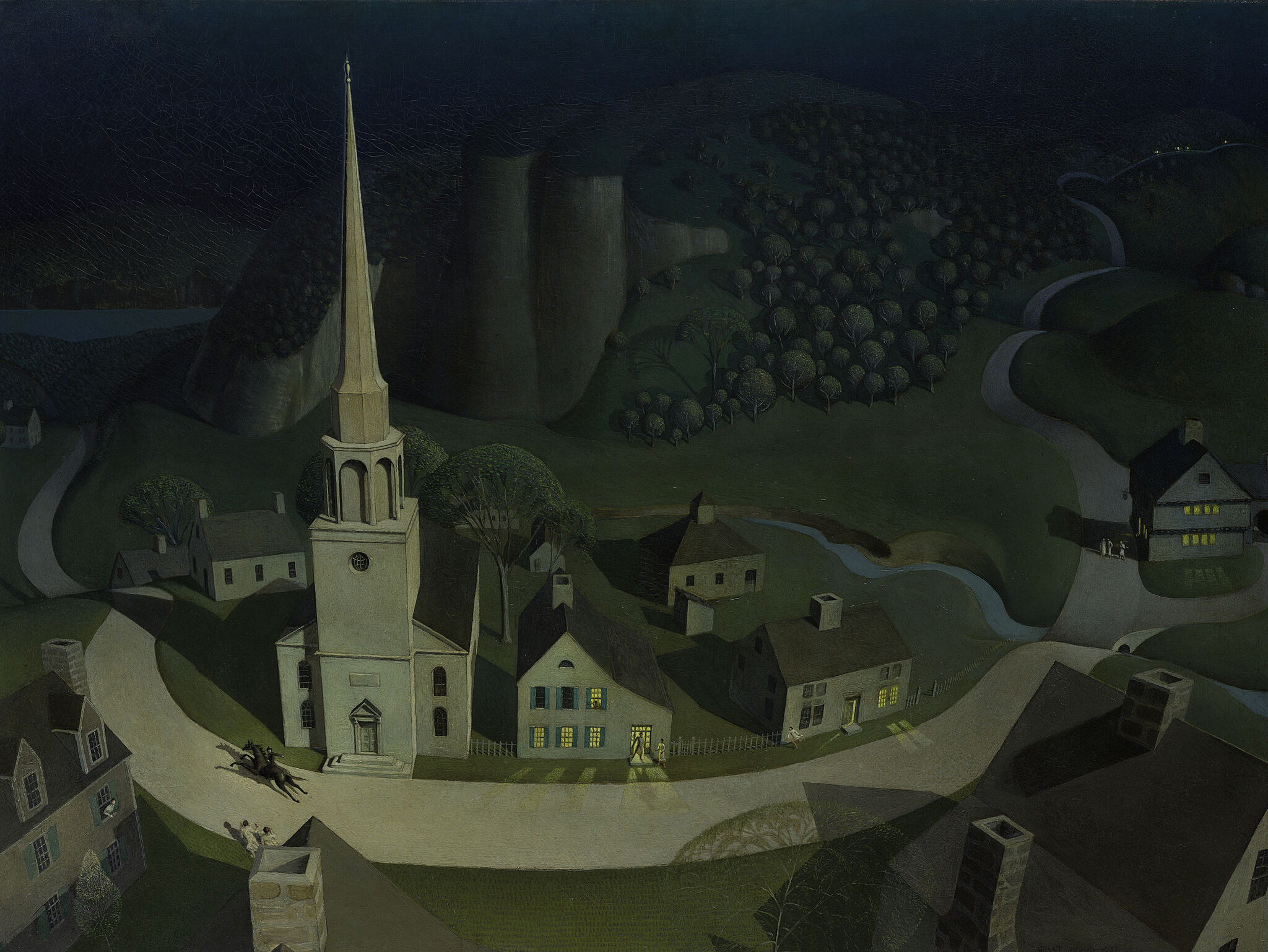Grant Wood: American Gothic and Other Fables | Art & Artists
Mar 2–June 10, 2018
Grant Wood: American Gothic and Other Fables | Art & Artists
Early Landscapes and Narrative Paintings
7
In his early landscapes, Grant Wood recast the farmscape of his childhood into an Arcadian fantasy of undulating, swollen shapes and decorative embellishments whose multiple focal points keep the viewer’s eye in constant motion by giving all parts of the composition equal weight. His landscapes do not depict Midwestern farm life in the 1930s. Instead, they portray his idealized memories of the 1890s farm in Anamosa, Iowa, where he lived as a young boy before moving to Cedar Rapids with his family following the death of his father. His desire was not so much to portray a world that was becoming extinct as to recover a mythical childhood that existed only in his imagination.

